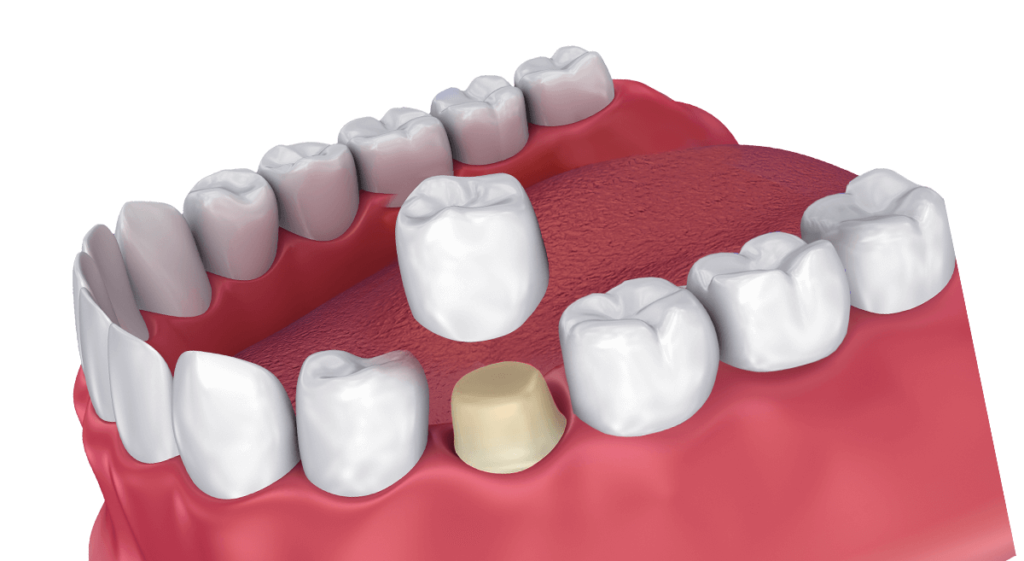What Are Tooth Crowns
Tooth crowns are actually caps that are designed to sit on top of damaged, restorable teeth. Crowns will often be used for protection, covering the remains of the tooth, or restoring the shape of the tooth when fillings are not enough.Book Your Appointment
What are dental crowns made of?
Dental crowns can be made out of numerous materials including porcelain, resin, and ceramics. These materials are used for different reasons depending on the tooth they are meant to be used for.
Why would you need a dental crown?
Heavily Restored Tooth
The tooth has had multiple and/or extensively large filling(s) and can risk breaking.
Root Canal Treatment
Teeth that have gone through root canals are at a higher risk of fracture because they can become more brittle over time.
Fractured Tooth
Cosmetic Treatment
As part of a ‘Smile Enhancement’ procedure in cosmetic dentistry, crowns are used to achieve a more aesthetic result.
Unlike porcelain veneers, which are purely cosmetic, crowns are restorative first, but have significant cosmetic use.
Occlusal Restoration Or Rehabilitation

What Is Process Of Getting Dental Crowns?
A dental crown is a fairly common procedure with many incredibly useful benefits. Dentists have been using crowns for a long time and they have the procedure down to these steps:
- Crown preparation – the general dentist ‘shaves down’ the tooth on all sides by approximately 1 to 1.5mm to accommodate the custom-made crown.
- Impression – Impression materials are used to make an accurate mold of the tooth being treated as well as surrounding teeth, and the bite. This can also be accomplished digitally using a specialized scanner instead of impression material.
- Temporary crown fabrication and placement – This step can may be skipped if the crown is made the same day.
- Cementation of the permanent crown – the permanent crown is cemented in place using a permanent adhesive. The bite is checked and adjusted as needed.
Crowns are fabricated using one or more of the following materials – metal alloy (stainless steel), gold alloy, porcelain, porcelain fused to metal, zirconia or porcelain fused to zirconia.
How many dental crowns are there?
Porcelain-fused-to-metal-crowns
metal & gold Crowns
Cosmetic Crowns (ceramic)
Ceramic crowns are made entirely of porcelain. These crowns are typically used for the most visible teeth since they are more likely to match the appearance of your teeth. The front (anterior) teeth will most-likely have porcelain crowns. The front teeth are usually not used for chewing, so the crown will not have to be nearly as durable.
All-Resin Crowns
All-resin crowns do not cost as much as their metal and porcelain counterparts. They are cheaper, but significantly less durable, which makes them prone to shorter lifespans and fractures. Typically, they are used on baby teeth only due to their short-term nature, and lack of durability.
